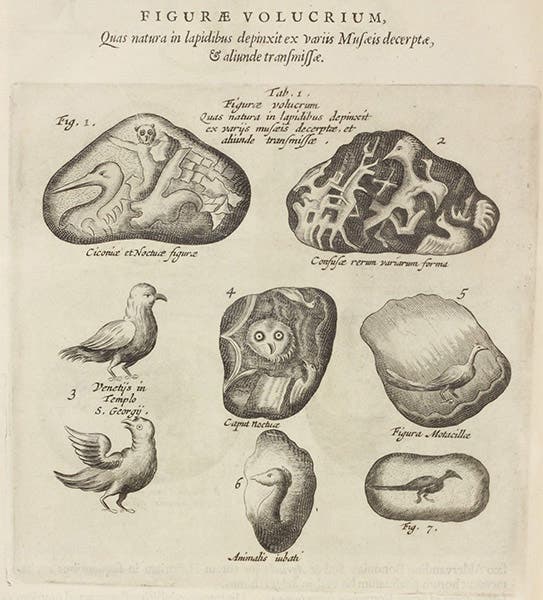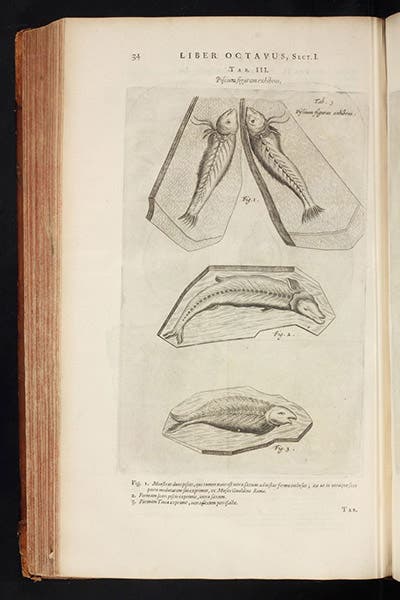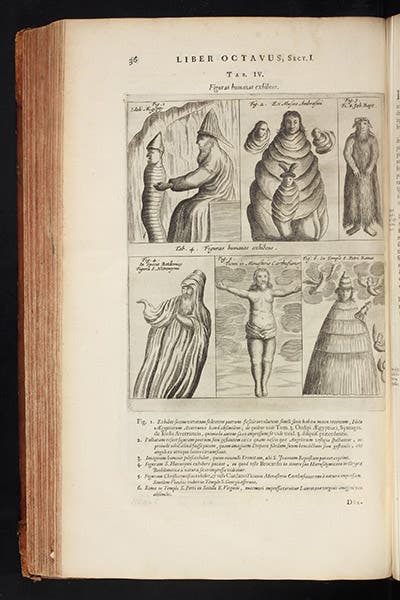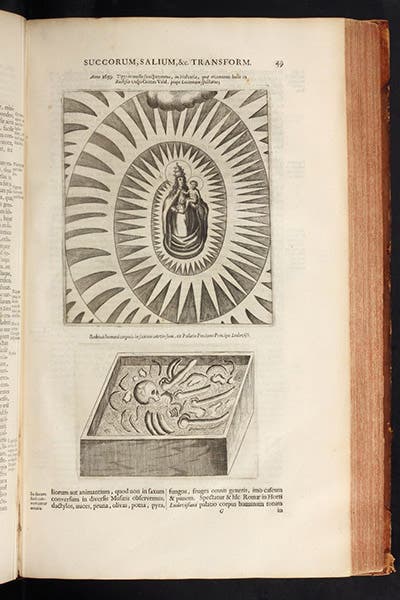Scientist of the Day - Athanasius Kircher
Athanasius Kircher, A German Jesuit natural philosopher working in Rome, was born May 2, in 1601 or 1602, in Fulda in central Germany. He came to Rome in 1635 and spent the rest of his life compiling massive scientific encyclopedias on all manner of subjects. We wrote a general introductory post on Kircher back in 2016, in which we introduced Kircher and showed some images from a few of the 29 Kircher works in our collections, on subjects such as light, magnetism, cosmology, music, and cosmology.
Today we are going to look at Kircher’s published thoughts on a particular subject, fossils. In Kircher’s time, fossils were more commonly referred to as figured stones, and a collection of fossils might include all manner of stoney objects that resemble something else. Many might conform to our idea of fossils – the remains of formerly living organisms – but most objects that resembled sea shells or shark’s teeth were not thought to be such; it was suspected instead that they formed in the earth and merely resembled living things. The transformation in attitudes towards fossils would come in the late 1660s with the work of Nicolaus Steno and Robert Hooke, who argued for the organic origin of shark’s teeth and ammonites. Kircher’s book containing his discussion of fossils came out in 1665, before Steno and Hooke made their evidence known. However, Kircher would not have accepted such views, which had been proposed and rejected many times since antiquity.
Kircher lived in a world of resemblances, an emblematic realm, in which everything in nature has a hidden meaning, and is an indicator of some truth, usually a religious one. So fossils, for Kircher, were signs; if a stone resembled something, it was meant to teach us a lesson. Kircher’s discussion of fossils came in the second volume of his Mundus subterraneus (1665), which is abundantly illustrated. A pair of pages early on has engravings of fossilized fish, and one might think that Kircher is about to propose an organic origin for such objects (fourth image). But then one encounters an engraving captioned: “Figures of birds, which Nature has painted in stone” (first image). These are fossils for Kircher, but they are clearly not fossilized birds – they are rather stones that resemble birds. They are wonders, objects to astonish us, and make us feel awe in the presence of Nature.
Another plate presents a piece of what we would call picture jasper, where a chunk of sandstone displays what might be seen as a landscape. Kircher’s portrays an entire city, complete with towers and steeples (fifth image).
Given Kircher’s religious calling, it is not surprising that many of his fossils deal with Christian themes. One engraving shows six fossils that resemble humans, and all are religious figures (sixth image). Not all are stoney – the object that resembles John the Baptist (top right) appears to be a root of some sort, and another fibrous object is in the shape of the Pope, complete with tiara (bottom right). But all serve as a kind of visual reminder of mileposts of Christian history.
The most impressive fossil in all of Kircher’s collection is a geode, split open to reveal a crystalline image of the Virgin and Child (seventh image). No doubt the engraving resembles Mary and Jesus more than the actual mass of crystals did. But there must have been something in the original that evoked the divine image, and for a Jesuit, or for any Christian, it would have been a vivid reminder of God’s presence in all aspects of the natural world. If you need evidence for belief, just look around. There is always a sign, and they are not that hard to read.
So Kircher had a different view of fossils from the next generation. There is nothing wrong with an emblematic view of the world. But it did not mesh well with the mechanical philosophy of René Descartes and Marin Mersenne then brewing in France, in which resemblances and magical forces play no role, and the world is not written in a divine code.
On some other occasion, we will look at volume I of the Mundus, which provides rich imagery of the subterranean Earth, and we should also, some day look at Kircher’s books on optics, and magnetism and – why not? – his fascinating tome on Noah’s ark, complete with ground-plan.
William B. Ashworth, Jr., Consultant for the History of Science, Linda Hall Library and Associate Professor emeritus, Department of History, University of Missouri-Kansas City. Comments or corrections are welcome; please direct to ashworthw@umkc.edu.













